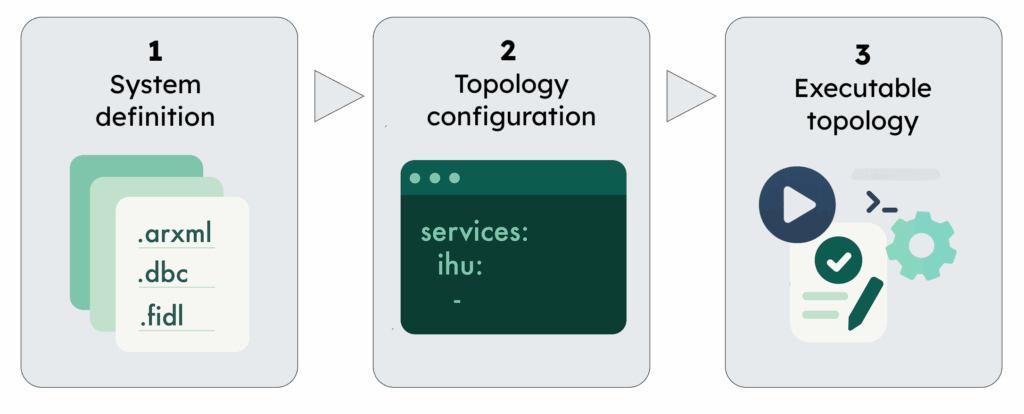This is the final article in our series to introduce RemotiveTopology. Virtualization is top of mind across the automotive industry — and with RemotiveTopology, we’ve built a platform designed to meet these challenges head-on.
Modern automotive software development faces growing challenges due to the complexity of distributed topologies. Often, complexity is divided across teams working in isolation, leading to painful late-stage integration issues — the infamous “integration hell.”
Silos are common across development and testing teams, as well as between Software-in-the-Loop (SIL) and Hardware-in-the-Loop (HIL) environments. Typically, a development team “throws” a release over the fence to a test team, which then depends on a system team to build test rigs. This handover-driven process creates long feedback cycles, slows down progress, and leads to frustration.
Many organizations remain heavily hardware-focused, which delays integration efforts. Hardware often becomes available late in the project, forcing teams to resolve most system dependencies without the ability to test them properly. As a result, critical issues surface much later than they should. Virtualized hardware (Level 3–4), which requires production-ready code, is usually introduced late which further limits early testing and fast interation.
In September 2024, we launched RemotiveTopology to radically simplify how automotive software is built and integrated. Our aim is to address thee above challenges by:
With RemotiveTopology we want to enable a smooth, iterative development journey where engineers develop and test their code locally, with a seamless flow into CI pipelines and onto HIL rigs before ending up in vehicles. The starting point is individual engineers and teams being able to mock and control the surrounding nodes and services on their development laptops from day 1. Nodes and services can mature individually, all the way to virtualized hardware nodes running production-ready code.
When code and tests run well locally, it is a smooth transition to central CI pipelines, which can be blocking to ensure code quality. When software releases pass the CI, they are automatically tested in HIL rigs before vehicle OTA. It’s when silos are bridged that integration will happen early and software development can speed up.
Working with vehicle software shouldn’t be a challenge. Our platform helps you get started in minutes, decoupling software from hardware to break down silos throughout the development process. By using virtualized, “real communication” between nodes, you can mix mocks, behavioral models, and real ECUs in one setup. This means you can:
RemotiveTopology supports familiar tools like Wireshark, pytest, Jupyter, Gherkin — and lets you bridge virtual buses to physical interfaces when ready. Whether you’re testing a module or a full vehicle topology, everything is built to scale.
Below is a demonstration on how to get an executable topology up and running that uses a Jupyter notebook as an interactive test bench and how to mix mocks and behavioral models with hardware ECUs.

Can a startup change how automotive software is built? We believe so. RemotiveTopology supports a smooth journey from prototype to production, powered by modularity, repeatability, and incremental iteration.
By bridging silos, left-shifting integration testing, and empowering engineers we can derisk and speed up development significantly by decoupling the software and hardware life-cycles; ending up in a state where the hardware only sets the physical limitation where the SW lives and is continuously updated. In this state the OEM is empowered and can make conscious decisions on feature growth (hardware or software) over vehicle iterations and models.
Continuous updates, modular builds, shorter feedback loops, and reuse of test suites across SIL, CI, and HIL setups with full support for standard formats and tools. You don’t need to wait for “final integration” to ship value.
Build it right from the beginning—and keep building!
Explore more: